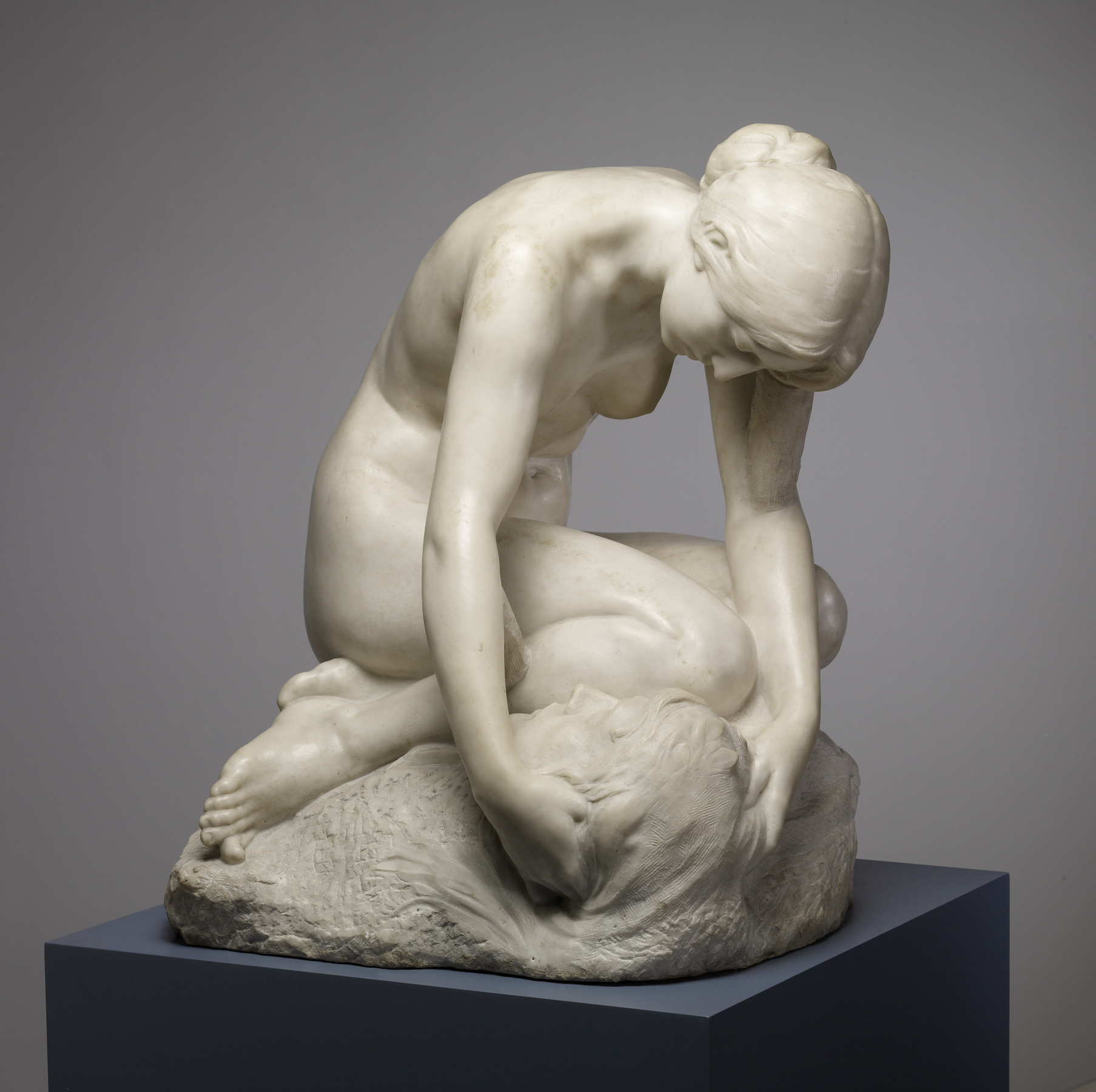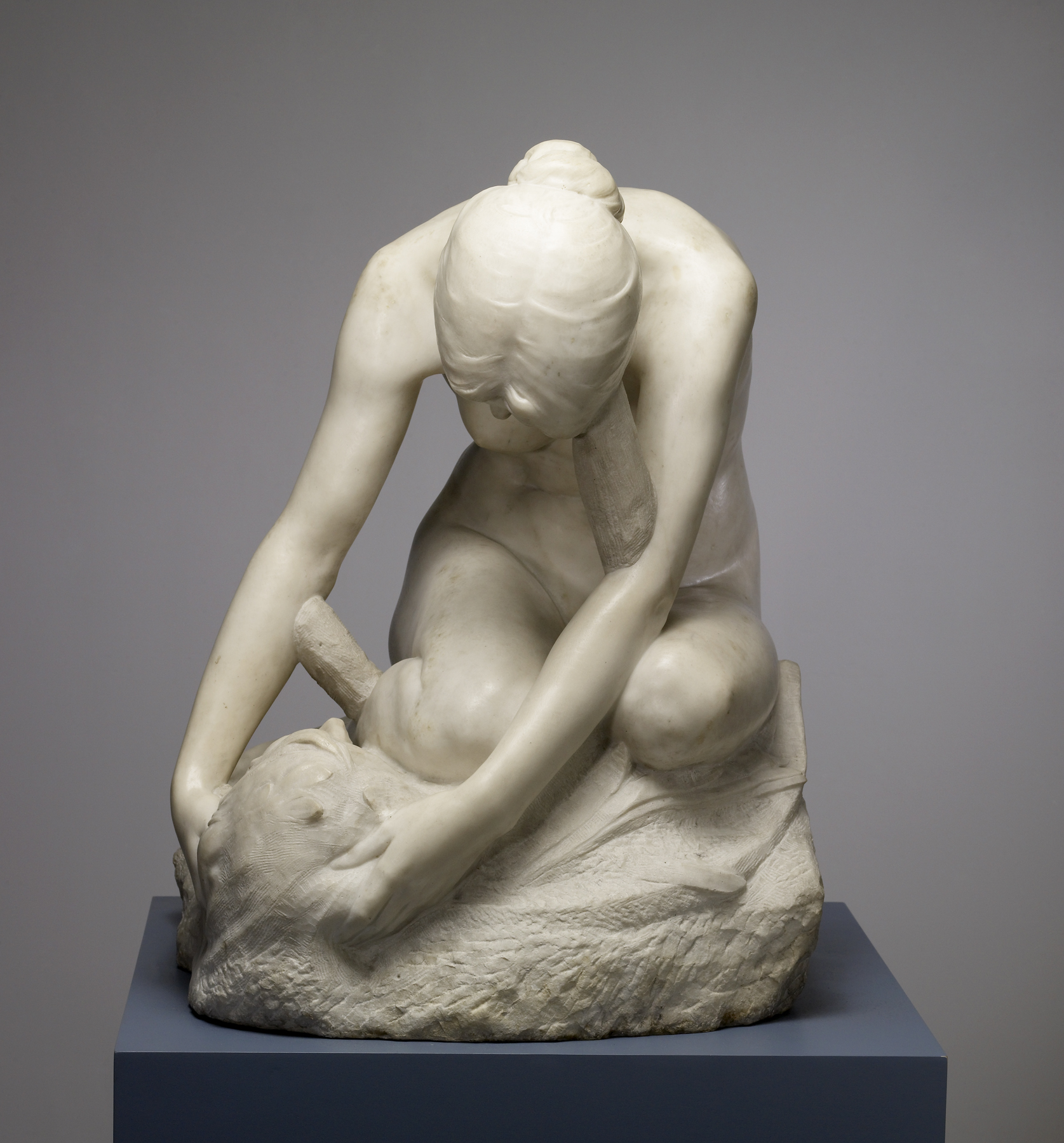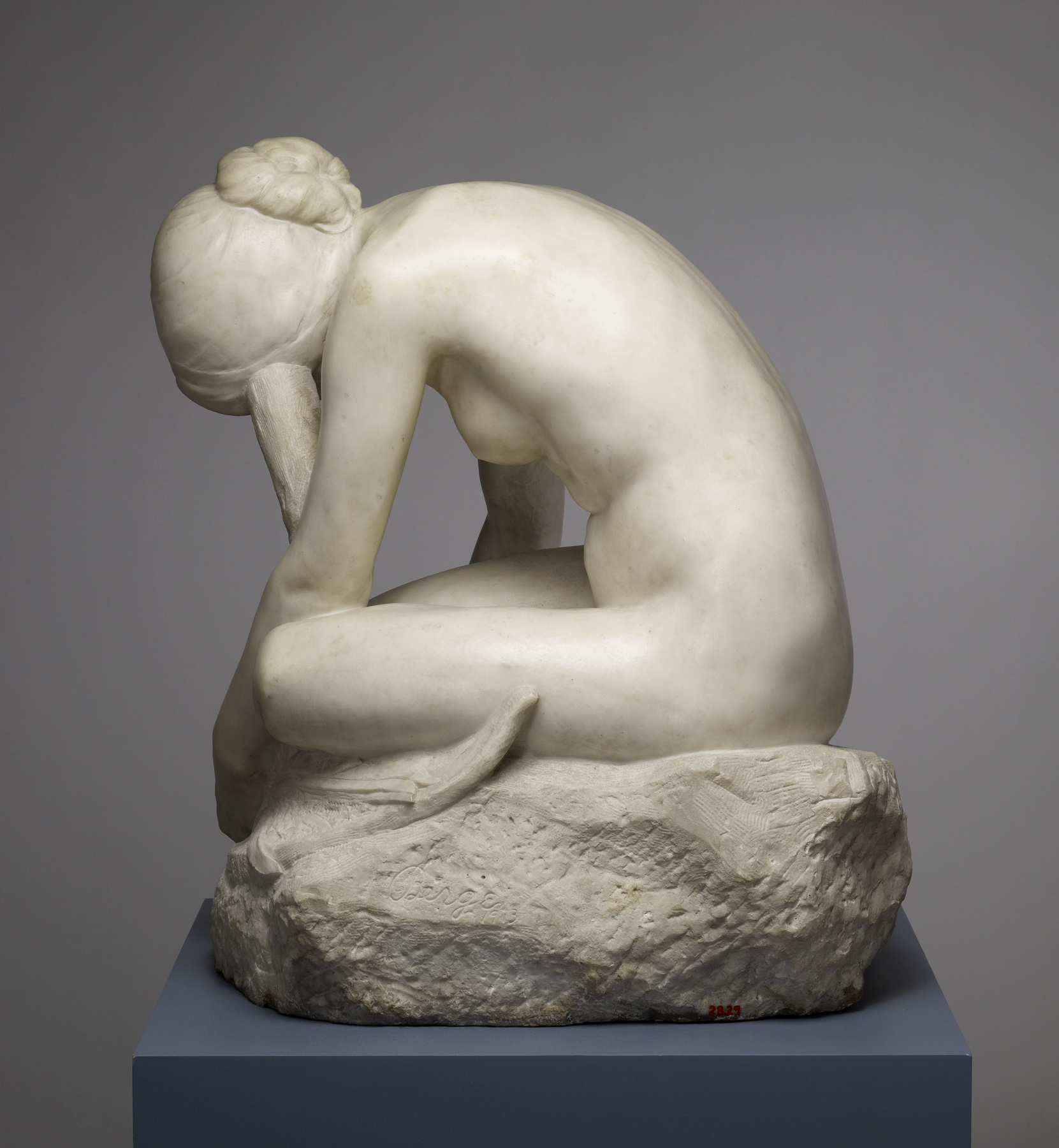Muse Finding the Head of Orpheus
(18th and 19th Centuries )
According to Greek myth, the women of Thrace tore Orpheus, a mythical poet, to pieces after he rejected their advances. His head floated across the Mediterranean Sea to the island of Lesbos, which then became the foremost center for lyre music in antiquity. Berge, a native of Baltimore, attended the Rinehart School of Sculpture at the Maryland Institute. He later studied in Paris under Raoul Verlet and Auguste Rodin. After his return to Baltimore, he became one of the city's foremost sculptors. The model for this sculpture was dated 1899. It was exhibited at the Salon in Paris in 1900 and received a William A. Clark Prize. This marble version was shown at the Panama Pacific Exposition of 1915. The sculptor, who regarded this piece as one of his most important works, had intended to remove the marble struts supporting the figure's arms after the piece had been purchased.
Inscription
Provenance
Provenance (from the French provenir, 'to come from/forth') is the chronology of the ownership, custody, or location of a historical object. Learn more about provenance at the Walters.
Lily Berge [wife of the artist], Baltimore; by bequest to Walters Art Museum, 1985.
Exhibitions
| 2015-2016 | Jewel City: Art of the Panama-Pacific International Exposition. de Young Museum, San Francisco. |
Geographies
USA, Maryland, Baltimore
(Place of Origin)
USA, Tennessee (Source of Materials)
Measurements
H: 29 × W: 27 15/16 × D: 22 1/16 in. (73.6 × 71 × 56 cm)
Credit Line
Bequest of Lily Berge, 1985
Accession Number
In libraries, galleries, museums, and archives, an accession number is a unique identifier assigned to each object in the collection.
In libraries, galleries, museums, and archives, an accession number is a unique identifier assigned to each object in the collection.
28.29










